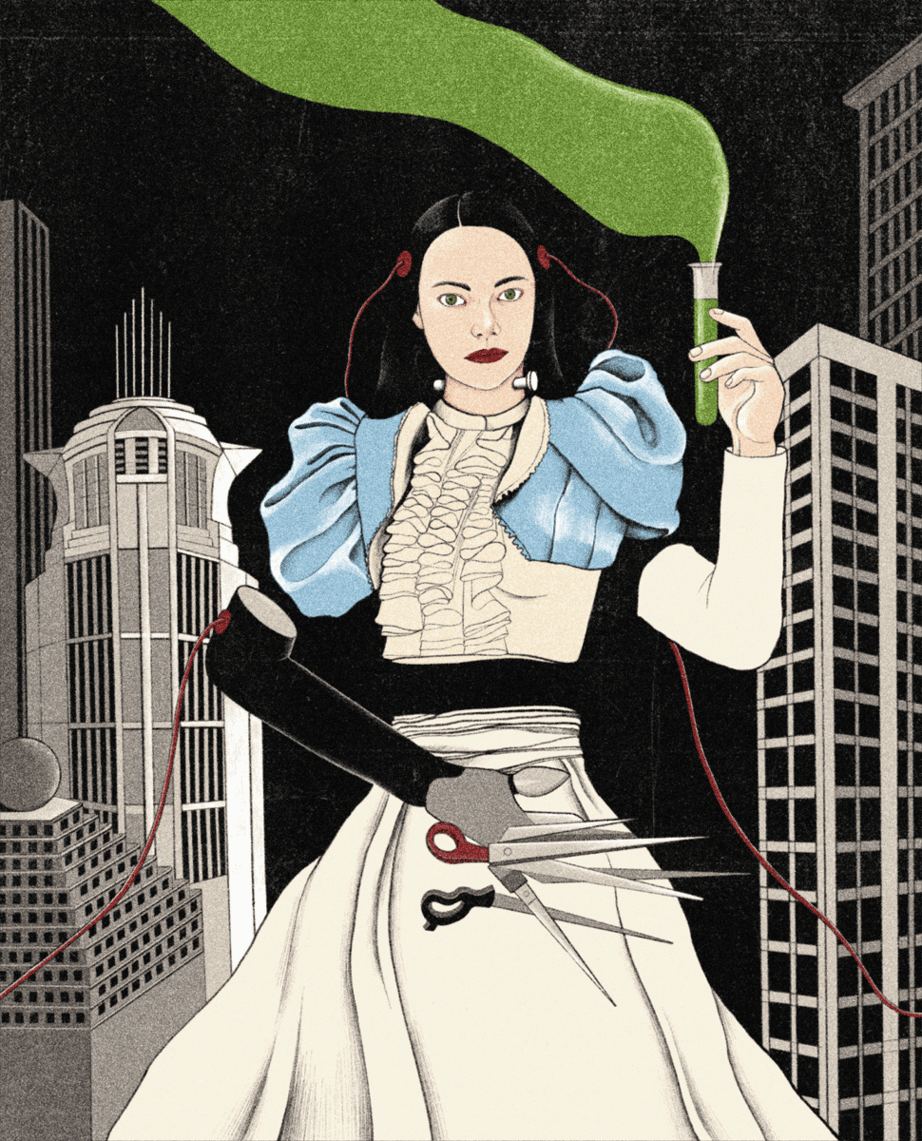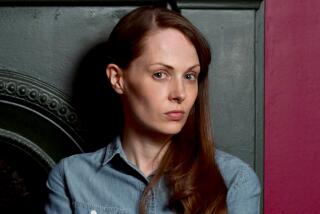DR. JEKYLL’S HOUSEKEEPER : MARY REILLY <i> by Valerie Martin (Doubleday: $18.95; 244 pp.; 0-385-24988-3) </i>
- Share via
A “fine bogy tale,” frightening and vivid, was once dreamed by a husband who, crying out in his sleep, was awakened by his startled wife. Instead of feeling relieved at escaping the nightmare, he felt irritated that she had interrupted such an exciting story. Nevertheless, the dream survived, was eventually embellished by the dreamer (who also was a writer) and turned into a work of fiction.
The husband was Robert Louis Stevenson; the tale became “Dr. Jekyll and Mr. Hyde,” a classic story with the power of myth whose very title has become synonymous with the concept of man’s duality and those who lead double lives.
The Calvinist message in “Dr. Jekyll and Mr. Hyde,” as Jenni Calder has pointed out in her introduction to a Penguin edition of the tale, was clear: Beware hidden sins! Avoid tampering with nature! The devil may not be as easy to recognize as we think, and the capacity for evil is within us all. Evil, in fact, is potentially more powerful than good: After all, in the end, it’s the heinous Henry Hyde, sharing Jekyll’s body, who destroys the well-meaning doctor.
There is another, subtler interpretation of the Dr. Jekyll myth, however, which Calder also points out: The “morality” of so-called respectable people is in fact a terrible burden, a prison that confines the natural spirit of humanity in an intolerable way. Dr. Jekyll, in becoming Mr. Hyde, is liberating himself from Victorian hypocrisy, though the result is, unfortunately, ultimately monstrous.
Now, just over 100 years after the original publication of Stevenson’s story, comes a powerful and moving novel based on the same tale but this time told from the perspective of Dr. Jekyll’s housemaid, Mary Reilly.
The first thing that must be said about “Mary Reilly”--whose author, Valerie Martin, has published five previous books--is that it’s a brilliant piece of work, a whopping good story so perfectly realized that it stands out for its honesty and beauty. Mary Reilly is a character of great kindness and goodness. Her perceptions of human nature ring with simple truth. She has the tender sadness of the servant who never imagines the possibility of marriage or any other form of escape from her life of constant and lowly laboring, and yet she never complains. For Mary, it’s enough to serve her “master” well.
Work is Mary’s raison d’etre. She toils to make a pretty little garden out of a dirt patch in the back yard. The smallest crumbs of praise or attention tossed in her direction by the kindly Dr. Jekyll fill her with a grateful happiness. She is obsessed with the importance of fulfilling her role with dignity, always remembering her “place.” In the moments when she reflects upon her life, there is a terrible, heart-rending sadness to her self-effacement. And yet, she seems so wise in her naivete, a fact that does not escape Dr. Jekyll, who gradually opens up to her and comes to rely on her for secret help, although she remains confused about his “experiments” until the truth is finally revealed.
In the opening pages of “Mary Reilly,” Mary is recounting for Dr. Jekyll the story of how she came to have such terrible scars on her neck and hands. The master has asked her to write down the story, sensing it would be too difficult to tell face to face, and thus Mary begins keeping a journal. The story of the scars is a chilling, startling beginning to the book, an incident so horrifying it has the power to lodge permanently in memory.
We learn that as a child Mary was abused by her drunken, low-life father. His cruelty, his “evil” nature, suggests Dr. Jekyll’s experiments with Hyde. One of the most interesting exchanges in the book occurs when Dr. Jekyll questions Mary on the subject of “good,” a brief dialogue reminiscent of George Bernard Shaw. Mary is on her knees (a position we find her in repeatedly throughout the book, and one loaded with innuendo) cleaning the claw-legged table; Dr. Jekyll has just come home from a meeting with officials of a slum school he endows, angry because he’s been told it’s not worth it to try and educate the poor.
“I’m not so naive as to think we can solve the world’s problems by having a school,” he says, “but surely we’ve an obligation to relieve suffering when we can. And ignorance is suffering . . . any school, simply by existing, must be a force for the good.” But Mary can’t agree with that.
“I was thinking that there can never be such a thing as a force for the good, sir,” she says, “and there’s the pity of it.” Force and good are words in opposition. “The two words won’t go together, as force can never do aught but evil,” Mary says. Doing good is very different from being good--the latter of course being the more unforced. She herself “only thinks of doing what I must do to stay as I am.”
“Which is good,” master says, as if to pay her a compliment. “No, sir,” she replies. “Which is safe.”
Martin has picked up and carried forward Stevenson’s ideas quite brilliantly: It is because Jekyll has tried so hard to be good that his goodness is not natural; it is affected, untrue. The greater his attempts to force goodness, the greater the monstrosity of the “Hyde” that emerges.
“Was Stevenson suggesting that it was dangerous to suppress certain elements of human nature?” asked Calder in her essay. “I think he was, and I think there is a great deal of psychological truth in what he is saying. He had experienced directly the iron grip of Calvinism and of bourgeois morality on human behavior, and he had recognized that it could be destructive, destructive because it affirmed that good for the Majority was something external, artificial, not intrinsic to human nature: Men could not be good unless they were told how to be good.
“Stevenson himself recognized a rather different kind of morality, a morality that came from within, that depended on a sensitive understanding of human relationships and responsibilities, that was flexible, individual, spontaneous.”
Consider, in light of these words, the activities of the Moral Majority and the current efforts of certain segments of our society to dictate the behavior of others; the debate over abortion; the struggle to keep artistic expression free of legislative control, and our National Endowment for the Arts, an institution of worth and integrity, and one can appreciate the extraordinary timeliness of this tale.
“We all feel something is amiss,” Mary writes toward the end of her story, meaning the servants of the house who can no longer ignore the menace in their midst. “It is like a fog rising up from the carpets, standing in every turning of the staircase. We carry on with our duties as best we can, for how can we do otherwise? But I think there is not an easy heart in this house.”
What a fine book “Mary Reilly” is. It deserves to become a companion of its inspiration. In fact, the works fit together like two hands whose fingers are intertwined. Part of the amazing skill of Valerie Martin is how she takes details from Stevenson’s story and recasts them on the page: She fills in the blanks; she tells you the “other” side.
The same players move across the stage. But Mary, who was mentioned only once in the original “Dr. Jekyll” and then never by name, is now the perfect, most empathetic observer of the tragically fatal events that end with a housemaid nestled on the floor against her dead “gentle Master,” whispering to him, “This is a cruel trick.”
More to Read
Sign up for our Book Club newsletter
Get the latest news, events and more from the Los Angeles Times Book Club, and help us get L.A. reading and talking.
You may occasionally receive promotional content from the Los Angeles Times.










